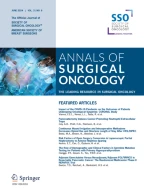Abstract
Background
Previous reports have demonstrated that CD133+ cells or CD44+ cells might be cancer initiating cells (CIC) of colon cancer. However, the association between the two cell types is unclear. In this study, we evaluated the tumorigenicity of each population of human colon cancer divided by CD133 and CD44 using non-obese diabetic/severe combined immunodeficient (NOD/SCID) mice.
Methods
Using the colon cancer cell lines HT29 and Caco2 we evaluated the change of expression status of CD133 or CD44 by a treatment with sodium butyrate (NaBT) that can induce cellular differentiation. Next, we prepared ten clinical samples of colon cancer and analyzed the expression and tumorigenicity of CD133 and CD44.
Results
With NaBT treatment, CD44 expression was greatly downregulated in both HT29 and Caco2 (HT29: nontreatment versus treatment; 77.8% versus 0.6%, Caco2: 14.0% versus 0.4%, respectively), more than CD133 expression (HT29: nontreatment versus treatment; 90.1% versus 67.7%, Caco2: 98.9% versus 76.3%, respectively). In clinical samples, the percentages of CD133+ cells and CD44+ cells varied from 0.3% to 82.0% (mean 35.5%), and from 11.5% to 58.4% (mean 30.0%), respectively. Subcutaneous injection of CD133+ or CD44+ cells made a tumor in all mice (3/3 and 4/4, respectively). The combined analysis of CD133 and CD44 revealed that only the CD133+CD44+ population had the ability to produce a tumor (3/3).
Conclusion
The findings demonstrate that, at present, the CD133+CD44+ population may be the best to identify tumor initiating cells of human colon cancer.
Similar content being viewed by others
References
Lapidot T, Sirard C, Vormoor J, et al. A cell initiating human acute myeloid leukaemia after transplantation into SCID mice. Nature 1994;367:645–8
Kondo T, Setoguchi T, Taga T. Persistence of a small subpopulation of cancer stem-like cells in the C6 glioma cell line. Proc Natl Acad Sci USA 2004;101:781–6
Singh SK, Hawkins C, Clarke ID, et al. Identification of human brain tumour initiating cells. Nature 2004;432:396–401
Al-Hajj M, Wicha MS, Benito-Hernandez A, et al. Prospective identification of tumorigenic breast cancer cells. Proc Natl Acad Sci USA 2003;100:3983–8
Kim CF, Jackson EL, Woolfenden AE, et al. Identification of bronchioalveolar stem cells in normal lung and lung cancer. Cell 2005;121:823–35
Wang S, Garcia AJ, Wu M, et al. Pten deletion leads to the expansion of a prostatic stem/progenitor cell subpopulation and tumor initiation. Proc Natl Acad Sci USA 2006;103:1480–5
Pardal R, Clarke MF, Morrison SJ. Applying the principles of stem-cell biology to cancer. Nat Rev Cancer 2003;3:895–902
Ieta K, Tanaka F, Haraguchi N, et al. Biological and genetic characteristics of tumor-initiating cells in colon cancer. Ann Surg Oncol 2007;15:638–48
O’Brien CA, Pollett A, Gallinger S, et al. A human colon cancer cell capable of initiating tumour growth in immunodeficient mice. Nature 2007;445:106–10
Ricci-Vitiani L, Lombardi DG, Pilozzi E, et al. Identification and expansion of human colon-cancer-initiating cells. Nature 2007;445:111–5
Dalerba P, Dylla SJ, Park IK, et al. Phenotypic characterization of human colorectal cancer stem cells. Proc Natl Acad Sci USA 2007;104:10158–63
Augeron C, Laboisse CL. Emergence of permanently differentiated cell clones in a human colonic cancer cell line in culture after treatment with sodium butyrate. Cancer Res 1984;44:3961–9
Sussman NL, Eliakim R, Rubin D, et al. Intestinal alkaline phosphatase is secreted bidirectionally from villous enterocytes. Am J Physiol 1989;257:G14–23
Souleimani A, Asselin C. Regulation of c-myc expression by sodium butyrate in the colon carcinoma cell line Caco-2. FEBS Lett 1993;326:45–50
Tsutsumi T, Ido A, Nakao K, et al. Reciprocal regulation of alpha-fetoprotein and albumin gene expression by butyrate in human hepatoma cells. Gastroenterology 1994;107:499–504
Graham KA, Buick RN. Sodium butyrate induces differentiation in breast cancer cell lines expressing the estrogen receptor. J Cell Physiol 1988;136:63–71
El-Deriny SE, O’Brien MJ, Christensen TG, et al. Ultrastructural differentiation and CEA expression of butyrate-treated human pancreatic carcinoma cells. Pancreas 1987;2:25–33
Acknowledgements
This study was supported by CREST of Japan, Science and Technology Agency; a Grant-in-Aid for Scientific Research (S) (17109013) from the Japan Society for the Promotion of Science; a Grant-in-Aid for Scientific Research on Priority Areas (17015032) from the Ministry of Education, Culture, Sports, Science and Technology of Japan; a Grant for The Third Term Comprehensive Ten-year Strategy for Cancer Control, and a Grant for Cancer Research from the Ministry of Health, Labor and Welfare of Japan.
The authors would like to thank Miss T. Shimooka, Miss Y. Nakagawa, and Miss M. Kasagi for their excellent technical assistance.
Author information
Authors and Affiliations
Corresponding author
Additional information
Naotsugu Haraguchi: Awardee of Research Resident Fellowship from the Foundation for Promotion of Cancer Research (Japan) for the 3rd Term Comprehensive 10- Year Strategy for Cancer Control.
Rights and permissions
About this article
Cite this article
Haraguchi, N., Ohkuma, M., Sakashita, H. et al. CD133+CD44+ Population Efficiently Enriches Colon Cancer Initiating Cells. Ann Surg Oncol 15, 2927–2933 (2008). https://doi.org/10.1245/s10434-008-0074-0
Received:
Revised:
Accepted:
Published:
Issue Date:
DOI: https://doi.org/10.1245/s10434-008-0074-0
